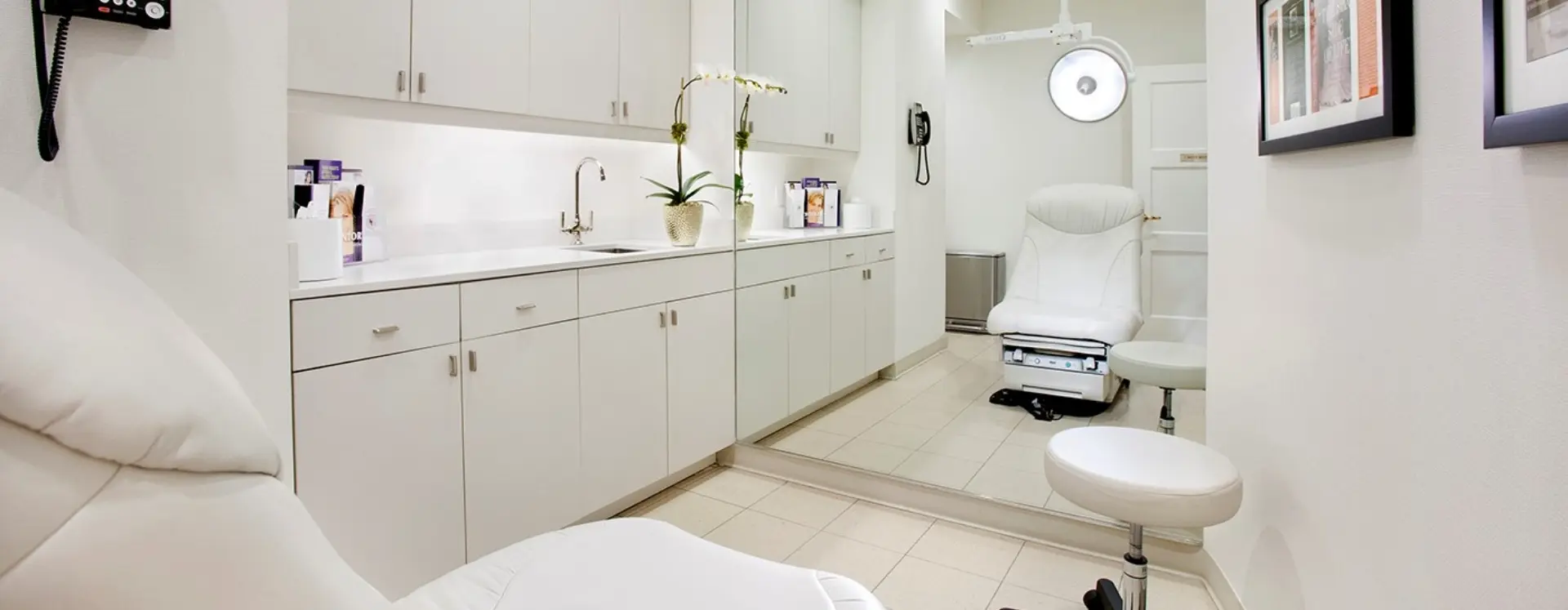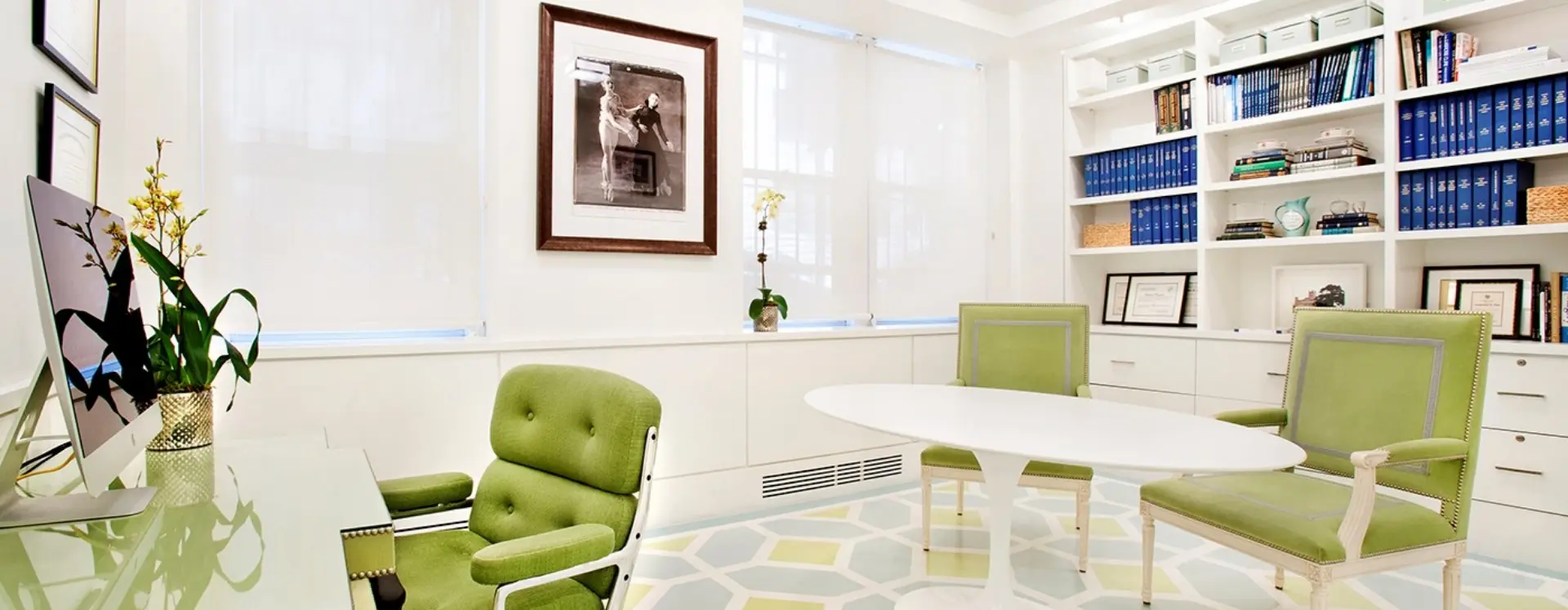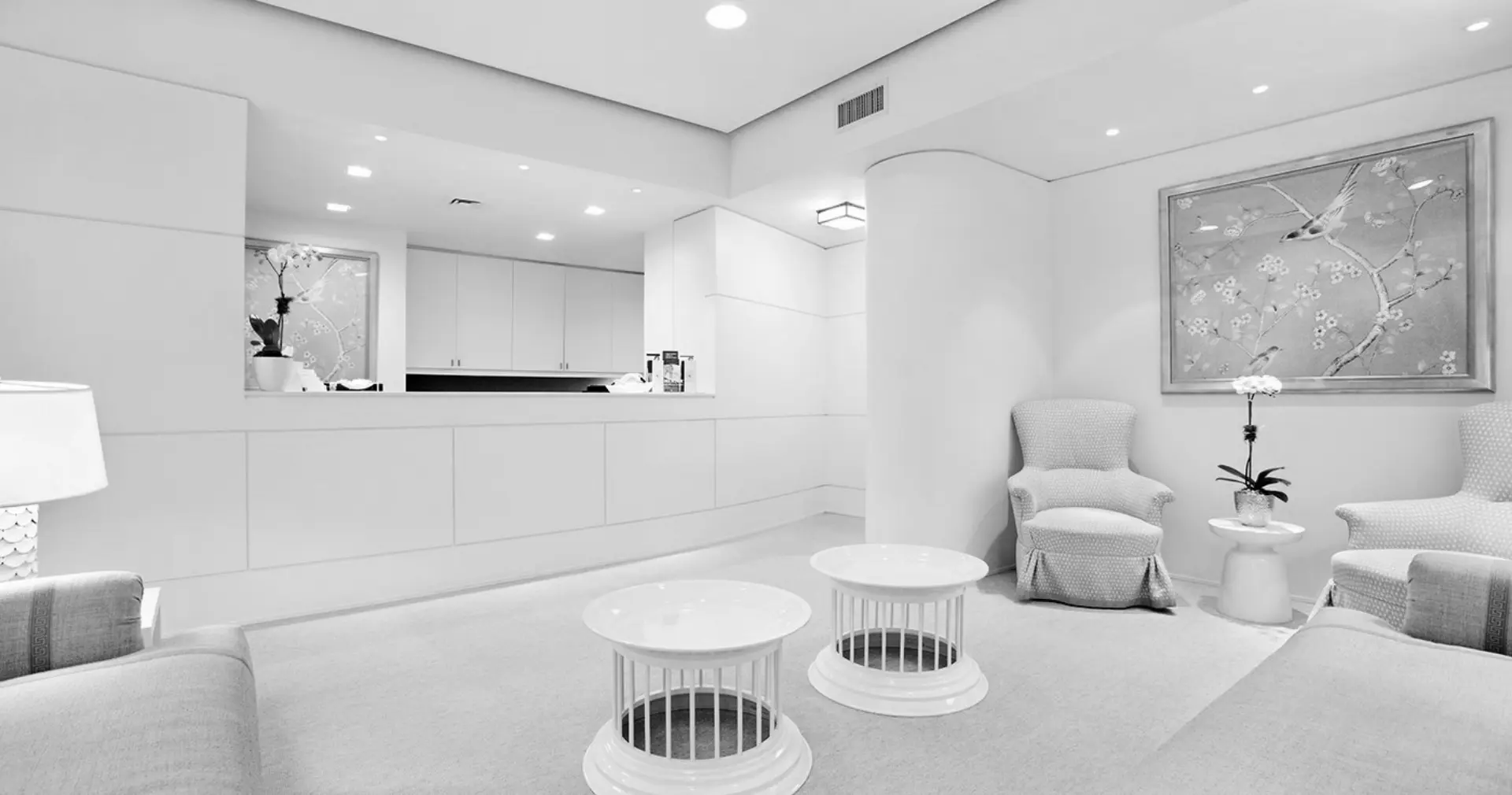
Stephen M. Warren MD, FACS
Secondary Cleft Rhinoplasty in New York City
What is Secondary Cleft Rhinoplasty?
Secondary Cleft Rhinoplasty (aka. secondary cleft nasal reconstruction or secondary cleft nasal surgery) includes a variety of reconstructive techniques performed any time after the initial cleft lip repair. When primary cleft rhinoplasty is skillfully performed, early secondary cleft rhinoplasty (ie. age 3-12 years of age) is uncommon. Some children with runny, stuffy noses and impaired nasal airflow will, however, need early secondary cleft rhinoplasty. Early secondary cleft rhinoplasty tends to focus on improving the patency of the nasal passages and improving the symmetry of the nasal tip and ala rims. More typically, secondary cleft rhinoplasty is performed when the nose has completed most of its growth, which occurs around age 13 or 14 years in girls and 14 or 15 years in boys. Secondary Cleft Rhinoplasty in young adults or adults is typically performed using an open rhinoplasty technique that requires a small incision across the columella (the skin between the nostrils). The skin is elevated, and the nasal bones and cartilage are reshaped. Septal extension grafts, tip grafts, spreader grafts, ala rim grafts and columella grafts are often used.
Introduction to Secondary Cleft Rhinoplasty
A cleft not only affects the lip, but it also affects the shape of the nose, airflow, and growth of the face. Even with skillfully performed primary nasal surgery, as patients mature, they can develop aesthetic nasal differences as well as impaired nasal airflow. Based on years of mentorship from expert teachers as well as his own studies, Dr. Stephen Warren has developed a passion for treating patients with cleft nasal differences. In addition, to improving the appearance of the nose, Dr. Warren uses endoscopic techniques to treat the blockages inside of the nose to improve the airflow. Bone grafting of the dentoalveolus to facilitate dental implants may also be necessary and augmentation of the maxilla can improve the midfacial features. Finally, secondary corrections of the lip scar can also be addressed at the time of cleft nasal reconstruction. Below, we have more information related to the procedures so you can decide if these treatments are right for you or your child.

Secondary Cleft Rhinoplasty in young adults/adults typically includes septoplasty, turbinate reduction, and removal of deviated bone (eg. vomer) from inside of the nose. In addition, midface augmentation with implants or fat grafting can be combined with the secondary cleft rhinoplasty. Similarly, dentoalveolar bone grafting in preparation for dental implants as well as cleft lip scar revision can be performed at the time of Secondary Cleft Rhinoplasty. After surgery, a splint is placed on the nose and patients remain out of the limelight for about 1 week. You can gradually return to normal activities over the next 3 weeks. After 8 weeks, the nasal bones and cartilage will have knitted together, and you can return to unrestricted activities. During this time, you will notice improved nasal and facial contours as the postoperative swelling continues to fade. And eventually, the breathing will begin to improve. It will, however, take about a year for your nose to settle into its final contour as minor residual swelling resolves and the skin envelope continues to contract.
Benefits of Secondary Cleft Rhinoplasty
What are the Benefits of Secondary Cleft Rhinoplasty?
Patients undergo Secondary Cleft Rhinoplasty to improve the following conditions:
- Reshape a poorly defined, uneven, and wide nasal tip
- Increase projection of a droopy nasal tip
- Improve the symmetry of the ala rims and ala bases
- Change the size and/or shape of the nostrils
- Straighten a deviated columella or elongate a short columella
- Straighten a crooked nose or narrow a wide nose
- Remove a hump or correct a depression in the bridge of the nose
- Improve facial balance by changing the size, length, and shape of the nose
- Lengthen a short nose by derotating the nasal tip to provide a more balanced profile
- Relieve nasal airway obstruction by straightening a deviated nasal septum and reducing enlarged turbinates


Who are the Best Candidates for Secondary Cleft Rhinoplasty?
Best Candidates For Secondary Cleft Rhinoplasty
Secondary Cleft Rhinoplasty can be a real game changer. Straightening the nasal axis, lifting and defining the nasal tip, improving the symmetry of the ala rims and bases, alleviating nasal airflow impairment, enhancing midfacial convexity, and revising the cleft lip scar can be transformative. Early secondary cleft rhinoplasty is performed on children 3-12 years of age. More typically, secondary cleft rhinoplasty is performed when the nose has completed most of its growth, which occurs around age 13 or 14 years in girls and 14 or 15 years in boys. There is no upper age limit, and any adult can undergo secondary cleft rhinoplasty. As with any surgery, good candidates for Secondary Cleft Rhinoplasty are:
- Non-smokers
- Physically healthy
- Psychologically healthy
- Realistic with their goals for what can be achieved from surgery
Cleft nasal rhinoplasty is typically much more complicated than aesthetic rhinoplasty, and while swelling improves within a short time, patients need to wait upwards of one year to allow all of the swelling to resolve, the scars to mature, and the skin and soft tissue to soften.
What is Functional Endonasal Surgery?
Our nose is happiest when we have smooth laminar nasal airflow. Obstructions in our nasal passages cause turbulent airflow which dries out our nose and makes breathing difficult. The most common cause of turbulent airflow is a deviated septum. Anyone can have a deviated septum, but persons with clefts are much more likely to have a deviated septum and the degree of deviation can be quite pronounced. Moreover, a congenital cleft-related deviation of the septum can cause a cascade of secondary consequences including: deviation of the vomer and anterior ethmoids, enlargement of the turbinates, and maxillary, ethmoid, and frontal sinus disease. Most patients presenting for Secondary Cleft Rhinoplasty have partial or complete obstructions in their nasal passages (whether they are aware of it or not). When nasal airflow obstruction has been a lifelong problem, many patients tend to be unaware of the degree of obstruction. Functional Endonasal Surgery is a compendium of techniques that include: septoplasty, vomerectomy, anterior ethmoidectomy, turbinate reduction, maxillary antrostomy, etc. Collectively, these procedures can be performed during Secondary Cleft Rhinoplasty to open the nasal passages and return nasal airflow to normal.
What is Revision (ie. Tertiary) Cleft Rhinoplasty?
When Secondary Cleft Rhinoplasty is skillfully performed, outcomes are quite good. Some patients, however, will have small persistent troubles such as lateral nasal wall/vestibular scarring that partially obstructs the nasal airflow or cicatricial vestibular contractures that flatten the curve of the ala rim. These and other small, but important problems, can be treated in Tertiary Cleft Rhinoplasty; in general, small problems require small corrections. As a Cleft Rhinoplasty specialist, Dr. Warren treats many patients referred to him with significant problems after Secondary Cleft Rhinoplasty procedures. These patients will often have short noses with obtuse nasolabial angles that require derotation and tip augmentation. Other will have complete collapse of an ala rim (ie. nasal vestibular stenosis) that not only affects the appearance of the nose, but also completely obstructs the airflow. Still others will have incompletely treated intranasal anatomy that results in persistent nasal airflow obstruction following Secondary Cleft Rhinoplasty.
Tertiary Cleft Rhinoplasty includes a panoply of surgical techniques. Tissues have been scarred or damaged by previous surgery, cartilage donor sites have been used, and the disappointment with previously unsuccessful surgery only adds to the stress of a tertiary procedure. Patients will often feel that they have run out of options. Successful Tertiary Cleft Rhinoplasty requires creative thinking and innovative surgical techniques often in conjunction with custom designed nasal stents to help guide tissue healing. Dr. Stephen Warren combines years of expert mentorship from world class teachers with interdisciplinary surgical research to offer patients novel and effective solutions to their challenging cleft nasal problems.

The First Steps
What’s The First Step?
The first step in undergoing Secondary Cleft Rhinoplasty in New York City is to contact our office and schedule a consultation with Dr. Warren. When you come in, he will review your medical history, listen to your concerns, and examine you. With your help, Dr. Warren will identify the key concerns, discuss the treatment options, and develop a treatment plan. For out-of-town or international patients, a virtual consultation can be easily arranged. Once you agree on the surgical treatments you can schedule your surgical date with our Patient Coordinator. Preoperative testing including a presurgical clearance by a local concierge pediatrician or internist can also be arranged. Perioperative instructions, hospital times and locations, and an itemized price breakdown will all be provided before surgery.
What to Expect on the Day of Secondary Cleft Rhinoplasty
Your Secondary Cleft Rhinoplasty will be performed either in our private AAASF certified operating facility or at one of the internationally recognized hospitals in New York City. Dr. Warren only works with board certified anesthesiologists and children are always treated by a pediatric anesthesiologist. On the morning of surgery, Dr. Warren will meet with you in the preoperative area to briefly re-review the surgical plan and answer any last-minute questions. Once in the operating room, you will go off to sleep under general anesthesia. If the cleft lip scar is to be revised, it is marked first and incised before moving onto the secondary cleft rhinoplasty. Secondary Cleft Rhinoplasty typically begins with an endoscopic technique to remove portions of the deviated septum. In addition to the septum, the vomer is often deviated and it, too, can be removed. Enlarged turbinates will be reduced. If facial implants are necessary, they will be placed next. Then onto the rhinoplasty. Secondary Cleft Rhinoplasty is performed using an open rhinoplasty technique. The skin is elevated, and the nasal bones and cartilage are reshaped. Septal extension grafts, tip grafts, spreader grafts, ala rim grafts and columella grafts are used as necessary. Dr. Warren can use your own cartilage or allogeneic cartilage. Vestibular webbing and ala base repositioning are performed simultaneously. Once the final nasal shape is achieved, the columella incision is closed, and a splint is applied over the nasal bridge. Typically, nasal packing is never placed. Long lasting local anesthetic will be injected before you wake up so that the operative sites are numb. These procedures will often take 6-8 hours to complete. Dr. Warren will update your family after each step of the procedure so that they can follow your progress and know that you are doing well.
How Much Does Secondary Cleft Rhinoplasty Cost in New York City?
The cost of a Secondary Cleft Rhinoplasty in New York City will vary depending on many factors, including the procedure to be performed, the complexity of the reconstruction, and the time needed for surgery. The best way to determine the cost of your surgery is to consult with Dr. Warren and make a list of your surgical goals. Once your goals are identified, the steps necessary to achieve those goals can be defined, and a personalized surgical plan with a complete breakdown of the cost of the procedures will be provided by our Patient Coordinator.
Secondary Cleft Rhinoplasty Recovery
Patients will spend about 2 hours in the recovery room. Since Dr. Warren injects local anesthetics during surgery, most patients do not have any pain in the recovery room. Instead, if anything, patients describe a sense of ‘facial pressure’. After a couple of hours in the recovery room, patients will be taken home by a family member or friend. Depending on the accessory procedures (eg. facial implants) performed during your Secondary Cleft Rhinoplasty, patients can eat and drink anything they like after surgery; though most will choose soft or easy to eat foods for a couple of days. You should keep your activity to a minimum during the first week so that your nasal splint stays in place, your tissues can heal, and to avoid bleeding from the nose. We advise that you plan to take at least one week off from work or school, but sometimes more time is necessary if accessory procedures are performed. Dr. Warren uses a balanced postoperative pain medication regimen to minimize side effects (eg. nausea) and still provide excellent pain relief. Splints and sutures are normally removed after a week during your post-op appointment. Out-of-town and international patients can fly home on the same day as the postoperative visit. You should be able to gradually return to normal activities such as standard exercise and non-contact sports over the next 3 weeks. After 8 weeks, the nasal bones and cartilage will have knitted together, and you can return to unrestricted activities. During this time, you will notice improved nasal and facial contours emerging as the postoperative swelling continues to fade. And eventually, the breathing will begin to improve. It will, however, take about a year for your nose to settle into its final contour as minor residual swelling resolves and the skin envelope continues to contract.


Choose us for Secondary Cleft Rhinoplasty in New York, NY
Why choose Dr. Warren?
Dr. Stephen M. Warren is a board-certified plastic surgeon specializing in cleft surgery. He trained at Boston Children’s Hospital with Dr. John B. Mulliken and then continued his cleft surgery training with Dr. Court B. Cutting in New York. Dr. Warren worked alongside Dr. Cutting for nearly a decade before Dr. Cutting retired in 2013 and transferred the care of his patients to Dr. Warren. While he was at NYU Langone Medical Center for many years, Dr. Warren moved his practice outside of the hospital to maintain the tradition of personalized cleft care. Dr. Warren continues to work with nearly two dozen cleft care specialists and he is a member of the NextGenFace Cleft and Craniofacial Team. Dr. Warren is a tenured Associate Professor of Plastic Surgery, Associate Professor of Oral & Maxillofacial Pathology, Radiology and Medicine at NYU Langone Medical Center. He is an emeritus Associate Professor of Cell Biology, emeritus Director of the Institute of Reconstructive Plastic Surgery Laboratories, emeritus Director of the Division of Clinical and Translational Research, emeritus Director of the Variety Center for Craniofacial Surgery, and emeritus Director of the Craniofacial Surgery Fellowship program at NYU Langone Medical Center. Dr. Warren is a Diplomate of the American Board of Plastic Surgery and a Fellow of the American College of Surgeons. He is a member of 23 professional societies, an ad hoc reviewer for 30 scientific journals, and on the editorial boards of a number of journals. He has authored nearly three hundred textbook chapters, clinical, and scientific articles. He has trained over 50 research and clinical fellows. Dr. Warren is frequently asked to lecture nationally and internationally on cleft and craniofacial surgery, tissue engineering, and regenerative medicine.
Schedule Consultation
Dr. Warren is here to help learn more about the benefits of Secondary Cleft Rhinoplasty and adjunct procedures such as functional endonasal surgery (e.g. septoplasty, turbinate reduction, and removal of deviated bone from inside of the nose), midface augmentation with implants or fat grafting, dentoalveolar bone grafting in preparation for dental implants, and cleft lip scar revision. These are life-changing procedures. Call us at 212-447-6229 or request a consultation through our website. Out-of-town and international patients can meet and discuss cleft care with Dr. Warren by telehealth visit. Having to make cleft treatment decisions can be stressful, but you can breathe a little easier knowing that you have one of the best cleft surgeons in the field looking after you or your child.
Stephen M. Warren, MD, FACS
Secondary Cleft Rhinoplasty FAQ’s

What Patients have
To say about our practice
To say about our practice
Sarah b.
Dr Warren is one of the world most talented surgeon that i have ever had the pleasure of meeting. My son's medical challenges started 16 years ago, at birth. Dr Warren recommended and performed a brilliant, genius surgery to rectify facial symmetry caused by a tumor.Samantha F.
Dr Warren is patient, systematic, thorough, a true perfectionist. I have the highest regard for everything Dr Warren did before, during and post surgery. Dr Warren made himself accessible around the clock to ensure that my son was taken care of every single step of the way.Debbie G.
Dr. Warren did my sons cleft lip/gum/nose surgery and will be doing his palate surgery. He not only is a fantastic surgeon but he has an incredible bedside manner, explains everything thoroughly, and is in such constant communication with us, we don’t feel we need a whole “team”.Robert A.
Dr. Warren is a consummate professional and an incredibly skilled surgeon. He has an amazing and comforting bedside manner that is equally met by his successful results as a surgeon.
Schedule your
Consultation
Consultation